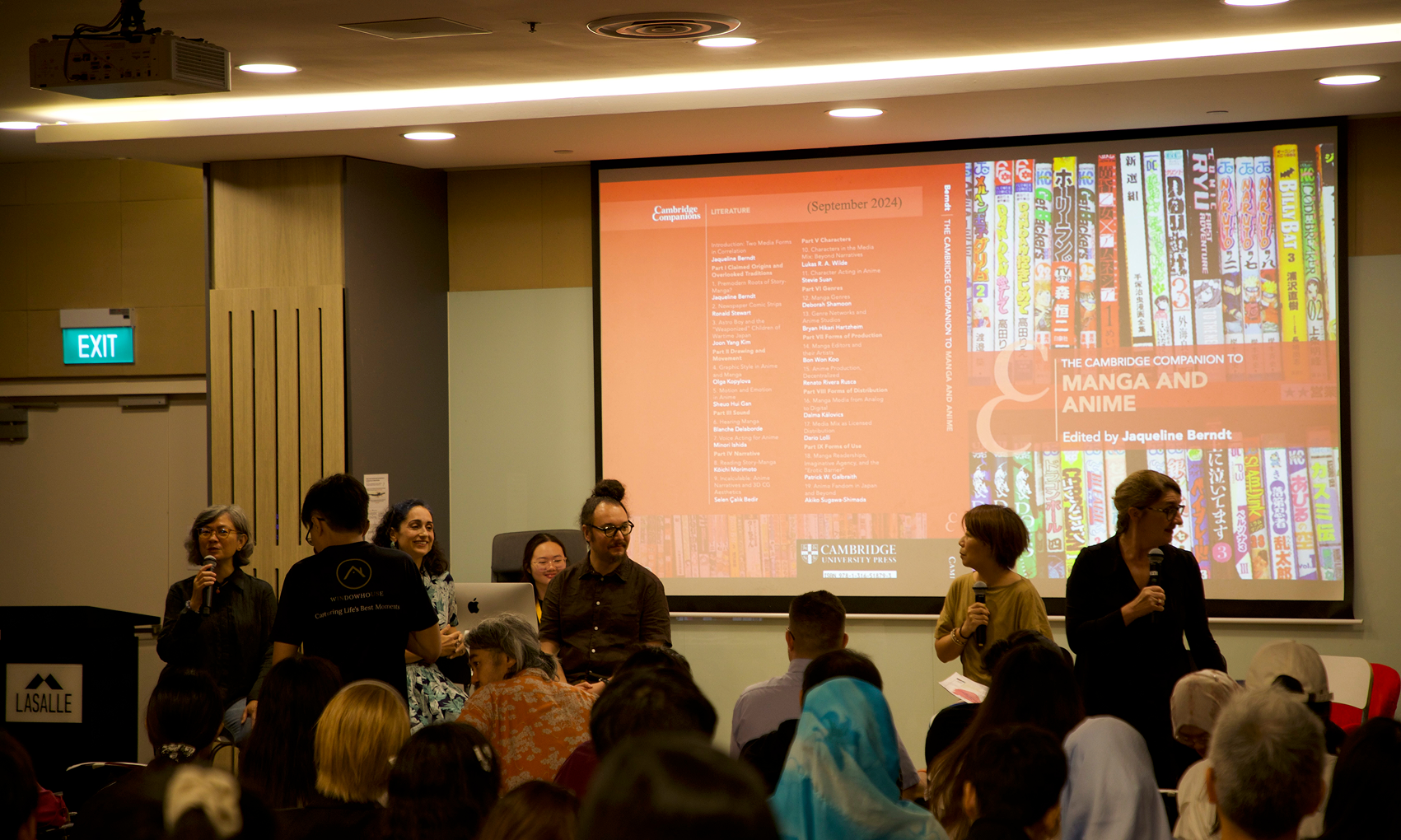Journal and book publications
The Introspective Merlion: Transculturalism in Singaporean Animation
Singapore celebrated 50 years of independence in 2015. The nation state has been repeatedly criticized as “a cultural desert” by scholars due to the cosmopolitan nature of the society. However, animated short films from Singapore are increasingly engaging national identity and culture as their premise. This paper explores how transculturation may shape the future of Singapore animated cinema by reflecting upon the creative voices of local animation filmmakers through a case study of seven animated shorts – Curry Fish Head (2013), 1997 (2014), Go Local (2014), The Violin (2015), Pioneers of the Future (2015), The Tiger of 142B (2015) and Lak Boh Ki (2016). The films reveal the effects of transculturation in multicultural Singapore from the perspective of animation filmmakers. Manifestation of Singapore culture is identified by representations of racial diversity; national personification such as the Merlion icon; local scenes such as the Housing Development Board (HDB) apartments; use of Singlish language; historical moments like the separation of Singapore and Malaysia; landmarks like the Marina Bay Sands; local delicacies such as fish head curry; nostalgia in the form of childhood memories in public schools. The emergence of these films can be attributed to both social engineering by the incumbent government through national campaigns as well as the erosion of the hyphenated identity through ground-up initiatives by citizens. The paper concludes that transculturation has led to a possible new wave of animated cinema from Singapore that will further contribute to the formation of a shared identity.
Citation:
Ang, Qing Sheng. “The Introspective Merlion: Transculturalism in Singaporean Animation.” Animation Studies, vol. 14, 2019.
How Does Theatre Think Through Incorporating Media
This book chapter investigates the multifarious ways that film, video and digital projections are used in theatrical stage productions, and the vast range of ideas, meanings and effects they create. Case studies of practitioners including Katie Mitchell, Robert Lepage, the Wooster Group and The Builders Association illustrate the myriad ways in which theatre thinks through, investigates and experiments with the potent conjunction of live performance and recorded media. It proposes a taxonomy of the five most impactful types of effect that theatre directors elicit and employ, from ‘the synesthetic pleasure principle’ and explorations of ‘ghosts and doubles’ to ‘metamorphosing time and space’.
Citation
Dixon, Steve. “How Does Theatre Think Through Incorporating Media.” Thinking Through Theatre and Performances, edited by Maaike Bleeker, Adrian Kear, Joe Kelleher, and Heike Roms, 1st ed. Bloomsbury, 2019, pp. 130-144.
The Liquid Architecture of Bodily Folding
Bodily folding, which includes enfolding and unfolding as points of entrance and departure or pathways that change spatial navigation through and with a particular material, matter or substance, could be seen as the baseline state of being within the continuum of action. Biologically, enfolding nurtures the self. It is a form of nest building, a fractal development of an internal structure, a deepening with the self. Unfolding, on the other hand, opens to the world. Unfolding is readiness, structural stability and creative mobility. It’s movement beyond the self. In this interview, Susan Sentler, dancer, choreographer and multidisciplinary artist, discusses folding as a cellular, bodily and geological practice as well as a form of somatic intelligibility.
Citation:
Sentler, Susan. ''The Liquid Architecture of Bodily Folding." Symbolism 2019: Special Focus: Beyond Mind, edited by Natasha Lushetich, et al., Berlin/Boston, DeGruyter, 2019, pp. 137-148, doi: https://doi.org/10.1515/9783110634952.
Softening the Borders of Codification
Should a formal, traditional ‘western’ modern dance technique be a necessary component for dance education in the globalised twenty-first century? Can the specificity of boarders that codification embraces, be crossed and dissolve allowing the language to transform and continue to grow? As a teacher of the Martha Graham technique for over 30 years, I question its relevance daily, especially working now in Asia, noticing the dancers needs within the landscape of the art field. This chapter will not only question the relevance of the Graham technique but also emphasise the methodologies and strategies I have developed to teach the principles inherent within it, focusing on my current pedagogic practice with dance students, ages 16 to early 20s. Moreover, I will interrogate how, through a combination of varied somatic practices and creative improvisational play, I can encourage students not only to embody this particular technique with greater efficiency but also stretch their confidence of agency and curiosity, working towards an individual artistic voice.
Citation:
Sentler, Susan. ''Softening the Borders of Codification.'' Dancing Across Borders : Perspectives on Dance, Young People and Change, edited by Charlotte Svendler Nielsen, and Stephanie Burridge, London, Routledge, 2019, pp. 31-41, doi: https://doi.org/10.4324/9781003008569.








